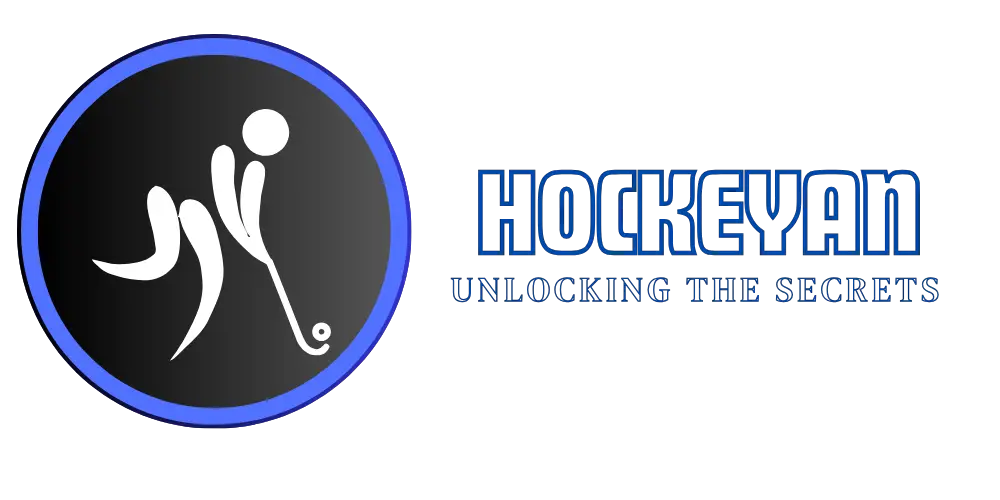Skating with hockey skates can seem challenging. But, it’s easier than you think.
Hockey skates are different from regular skates. They offer more control and speed. Learning to skate with them can improve your skills on ice. Whether you are a beginner or looking to switch from figure skates, this guide will help.
Skating with hockey skates combines fun and fitness. It’s an exciting way to enjoy the ice. You will feel more confident as you practice and understand the basics. Ready to glide smoothly and confidently? Let’s dive into the basics of skating with hockey skates.
Choosing The Right Hockey Skates
Choosing the right hockey skates is crucial for a comfortable and enjoyable skating experience. The right pair can make a significant difference in your performance on the ice. Let’s explore two important aspects: fit and comfort, and blade quality.
Fit And Comfort
Finding hockey skates that fit well is essential. Your skates should feel snug but not too tight. A good fit ensures better control and stability. Here are some tips for finding the right fit:
- Try on skates with the same socks you will wear while skating.
- Your toes should lightly touch the front of the skate when standing.
- Your heel should stay in place without lifting.
Comfort is also key. Look for skates with padded interiors. Good padding reduces pressure points and prevents blisters. Some skates have heat-moldable linings. These can be custom-fitted to your feet for added comfort. Remember, comfortable skates can enhance your performance and enjoyment on the ice.
Blade Quality
Blade quality impacts your skating experience. High-quality blades offer better glide and control. Here are some factors to consider:
| Factor | Importance |
|---|---|
| Material | Stainless steel blades are durable and rust-resistant. |
| Hollow | Shallower hollows offer more speed, deeper hollows provide better grip. |
| Sharpening | Regular sharpening maintains performance and safety. |
Investing in good blades can improve your skating performance. With the right fit and high-quality blades, you can skate confidently and comfortably.

Credit: www.wikihow.fitness
Basic Skating Techniques
Learning to skate with hockey skates opens a world of fun and fitness. To get started, mastering basic skating techniques is essential. These techniques form the foundation of your skating skills. With practice, you will skate smoothly and confidently.
Stance And Balance
The right stance keeps you steady on the ice. Bend your knees slightly. Keep your feet shoulder-width apart. Your weight should be on the balls of your feet. This helps you balance better. Lean slightly forward, not backward. Hold your arms out for balance. These tips will help you stay upright and steady.
Forward Skating
Forward skating is the first move to learn. Start by pushing off with one foot. Glide forward on the other foot. Alternate your feet to keep moving. Keep your knees bent and your weight forward. Use short, quick strides. This helps maintain speed and balance. Practice makes perfect. The more you skate, the easier it gets.
Advanced Skating Skills
Advanced skating skills are crucial for hockey players seeking to elevate their game. Mastering these techniques ensures better control, speed, and agility on the ice. This section focuses on two essential advanced skills: Crossovers and Backward Skating.
Crossovers
Crossovers help players change direction quickly and maintain speed. Start by gliding on one foot. Cross the other foot over, placing it in front. Push off with the back foot for momentum. Repeat the process smoothly.
Practice both clockwise and counterclockwise directions. This improves balance and versatility. Keep your knees bent and body low. This stance helps maintain stability.
Focus on smooth, continuous movements. Avoid jerky motions that disrupt your balance. Crossovers are essential for navigating tight turns and maintaining speed during play.
Backward Skating
Backward skating is another crucial skill. Begin by standing with your feet shoulder-width apart. Bend your knees slightly and lean forward. Push off with one foot, gliding backward.
Alternate feet in a smooth, rhythmical motion. Keep your head up and look over your shoulder. This helps you maintain awareness of your surroundings. Use your edges for better control and stability.
Practice transitioning from forward to backward skating. This enhances your ability to change directions quickly. Work on increasing your speed and maintaining balance. These skills are vital for effective defense and quick maneuvers.
Improving Speed And Agility
Improving speed and agility is crucial for any hockey player. These skills help you outpace opponents and make sharp, quick movements. Below, we’ll explore some effective ways to enhance your speed and agility on the ice.
Acceleration Drills
Acceleration is about how quickly you can reach top speed. Here are some drills to improve your acceleration:
- Short Sprints: Skate from the goal line to the blue line as fast as you can. Rest for 30 seconds and repeat.
- Explosive Starts: From a standstill, practice quick starts. Focus on your first three steps.
- Cone Drills: Set up cones in a straight line. Skate from one cone to the next, focusing on quick, powerful strides.
Edge Work
Edge work is about controlling your skates on the ice. Good edge work makes you agile and helps with balance. Try these exercises:
- Inside and Outside Edges: Practice gliding on one foot, using the inside and outside edges of your skate. Switch feet and repeat.
- Figure Eights: Skate in a figure-eight pattern. Focus on tight turns using both inside and outside edges.
- Crossovers: Do crossovers in both directions. This will help you turn quickly and maintain speed.
| Drill | Focus Area |
|---|---|
| Short Sprints | Acceleration |
| Explosive Starts | Initial Speed |
| Cone Drills | Quick Strides |
| Inside and Outside Edges | Edge Control |
| Figure Eights | Agility |
| Crossovers | Turning Speed |
Safety Tips For Skating
Skating with hockey skates can be fun and thrilling. But safety is key to enjoy the experience fully. Here are some vital safety tips to keep in mind.
Wearing Protective Gear
Always wear the right protective gear. This includes a helmet, gloves, knee pads, and elbow pads. A helmet protects your head from serious injuries. Gloves keep your hands safe from cuts and bruises. Knee pads and elbow pads cushion your joints against falls. Wearing the right gear is the first step to a safe skating experience.
Avoiding Common Injuries
To avoid common injuries, practice the correct skating techniques. Bend your knees slightly and keep your body relaxed. This helps you maintain balance and control. Do not skate too fast, especially in crowded areas. Always be aware of your surroundings and other skaters.
Warm up before you start skating. Stretch your legs, arms, and back to prepare your muscles. This reduces the risk of strains and sprains. If you feel pain, stop skating immediately. Rest and recover before hitting the ice again.
| Protective Gear | Benefits |
|---|---|
| Helmet | Protects head |
| Gloves | Prevents cuts and bruises |
| Knee Pads | Cushions knees |
| Elbow Pads | Cushions elbows |

Credit: www.youtube.com

Credit: hockeyshot.com
Frequently Asked Questions
What Are Hockey Skates?
Hockey skates are specialized skates used in ice hockey. They offer support and agility.
How Do I Choose The Right Size?
Measure your foot and refer to the skate size chart. Fit should be snug.
How Do I Lace My Hockey Skates?
Start from the toe and lace up evenly. Ensure they are tight but comfortable.
What Is The Proper Stance For Skating?
Bend your knees, lean slightly forward, and keep your feet shoulder-width apart.
How Do I Stop On Hockey Skates?
Use the hockey stop method. Turn your feet sideways and apply pressure to the edges.
How Can I Improve My Balance?
Practice standing on one foot on the ice. Use balance exercises off the ice too.
What Exercises Help With Skating?
Squats, lunges, and core exercises. These strengthen your legs and improve stability.
How Often Should I Sharpen My Skates?
Sharpen them after every 15-20 hours of skating. Dull blades affect performance.
How Do I Maintain My Hockey Skates?
Dry them after each use, store in a dry place, and regularly check for damage.
Conclusion
Skating with hockey skates can be enjoyable and rewarding. Practice regularly to improve. Keep your balance and focus on your form. Don’t rush; progress takes time. Always wear protective gear for safety. Enjoy the process and have fun on the ice.
With dedication, your skills will grow. Happy skating!




